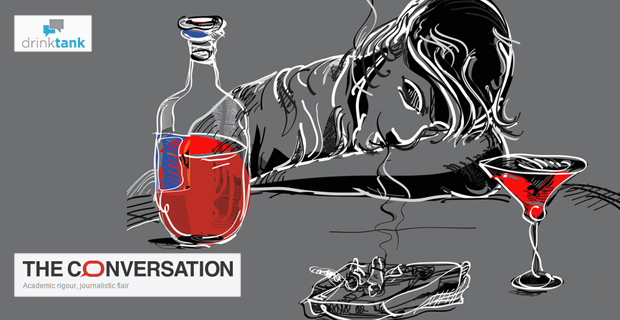A few years ago I helped a member of the Cabinet Office’s Behavioural Insights Unit (now a private business) draft a radical new approach to alcohol policy. Our proposal was based on a simple but seldom acknowledged insight – alcohol companies understand that heavy drinkers are often counter-cultural consumers. They are more likely to transgress official instructions to drink “sensibly” than obey them. And brands that are positioned as counter-cultural will be more appealing to these consumers.
My collaborator had previously worked in marketing. He understood that positioning is often implicit, and brands are secretive about it. Regulators such as the Advertising Standards Authority tend to focus on the literal content of advertisements. We thought that more effective regulation might be possible if the industry was forced to share what it knows about what brands mean to consumers.
As it turned out, the civil servants didn’t want to get into the quicksands of interpretation and the proposal was rejected. My academic colleagues and I, though, made our point in a recent research paper: that it is a mistake for alcohol policy initiatives to ignore the counter-cultural appeal of heavy drinking.
Anti-mainstream appeal
The idea that consumption can be counter-cultural might seem like a contradiction – what could be more conformist than buying the stuff marketers tell us to? Marketing resolves the contradiction by co-opting our counter-cultural impulses.
Anthropologists tell us that the transgression of social norms is necessaryin order to reinforce them, and Western consumer culture has been a theatre for controlled transgression since the 1960s when brands first co-opted the culture of youth, popular music, fashion, biker gangs, surfers, urban street culture and more, to facilitate the expression of consumer identity.
Harley Davidson was one of the early brands to pioneer counter-cultural market positioning. Today, the quintessential motorbike brand beloved of outlaw gangs and middle-aged bankers with an identity crisis still focus their marketing on an anti-mainstream appeal, even if many of their customers are anything but.
Many other sectors from fashion to fragrance soon followed. Thomas Frank noted in his classic The Conquest of Cool that when sports brand Nike featured beat poet William S Burroughs in a 1994 TV ad it was less of a radical departure in brand positioning than a tacit admission of the role of business in co-opting and normalising counter-culture. When anti-capitalist website Adbusters launched a branded training shoe it seemed the last word on how marketing absorbs activism.
A source of escape
Alcohol is a prime site for counter-cultural marketing because drinking has been a source of escape from officialdom and a time-out from formal social structures for some 400 years in the UK. Historically, UK alcohol policy has exposed tensions between state control, markets, and individual freedom. It is telling that popular media stories around alcohol have now moved to label the “middle class over-50s” as problem drinkers. The evidence behind such claims might be arguable, but one thing is certain – if the supply of counter-culture doesn’t keep up with the demand for it, vested interests can manufacture some more.
It wasn’t until the 1980s that the UK market began to exploit alcohol’s rich counter-cultural potential. Alcohol advertising jettisoned actors who looked like middle managers and began to feature lairy, rebellious characters like the Hofmeister Bear and Australian comic Paul Hogan.
Soon, high alcohol mixer drinks came into the market positioned as recreational with brand names like “RAVE” and “DNA”. The Advertising Standards Authority insists to this day that alcohol advertising cannot target under 18s, but health lobbies are sceptical and want an outright ban. Some studies have suggested that under-age drinkers think alcohol brands are cool from early childhood.
There have been signs that binge drinking has passed its peak in the UK. Nonetheless, alarm persists among health lobbies and central government at the economic and social cost of drinking.
So how can alcohol policy respond to the paradox that policy messages to drink less can be interpreted from a counter-cultural perspective as cues to drink more? One line of argument is that the state should leave marketing to the market and refrain from mass media campaigns, instead focusing on treatment, factual information and supply side measures such as licensing.
An alternative view is that state-sanctioned “social” marketing around health issues should try harder to engage with target groups in ways that are not seen as patronising or irrelevant. Either way, policy makers need to acknowledge the huge challenge presented by the counter-cultural appeal of thumbing one’s nose at official rules and recommendations.
This article was originally published on The Conversation. Read the original article.








Add comment